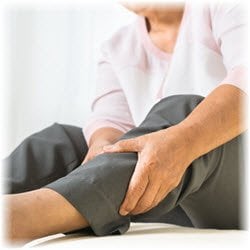Sleep and Restless Legs Syndrome (RLS)
 Restless legs syndrome is a disorder that affects the nervous system and muscles. It causes unpleasant sensations in the legs. The sensations are described as:
Restless legs syndrome is a disorder that affects the nervous system and muscles. It causes unpleasant sensations in the legs. The sensations are described as:
- Creeping
- Crawling
- Tingling
- Pulling
“People with RLS usually have these sensations in the calf, but they may be felt anywhere from the thigh to the ankle,” says Keith Cochran, neurologist at PIH Health. “One or both legs may be affected and some people may even have the sensations in their arms. With RLS, you have an irresistible urge to move the affected limb when the sensations occur. Moving often briefly relieves the limb discomfort.”
Sleep problems are common with RLS because of the difficulty it causes in getting to sleep. Severe daytime fatigue can also be a big problem.
Causes of RLS
The cause of RLS is still unknown. Some cases are believed to be inherited. Some cases have been linked with nerve damage in the legs from diabetes, kidney problems, iron deficiency, certain medicines, pregnancy, sleep disorders, and alcoholism.
According to the National Institute of Neurological Disorders and Stroke, it is estimated that up to 7 to 10 percent of the U.S. population may have RLS and women are more likely to have it than men.
Symptoms of RLS
Sensations occur when you lie down or sit for a prolonged time. This causes:
- The need to move the legs for temporary relief of symptoms by:
- Stretching or bending
- Rubbing the legs
- Tossing or turning in bed
- Getting up and pacing
- Worsening symptoms when lying down, especially when trying to fall asleep at night, or during other forms of inactivity, including just sitting
- A tendency to feel the most discomfort late in the day and at night
Treatment for RLS
Your healthcare provider will consider your age, overall health and other factors when advising treatment for you. Treatment options for restless legs syndrome may include:
- Trying good sleep habits
- Stopping activities that worsen symptoms
- Giving up caffeine, alcohol, and tobacco. These may make symptoms worse.
- Regular, moderate exercise
- Maintaining a well-balanced diet
- Treating underlying chronic conditions
“Your healthcare provider can diagnose RLS based on your signs and symptoms, a complete medical history, and a physical exam,” says Dr. Cochran “Medicine and lifestyle changes can help ease symptoms of RLS.”
For more information on conditions we treat, visit us at PIHHealth.org/Neurology
Powered by StayWell
2021 The StayWell Company, LLC. except where otherwise noted.